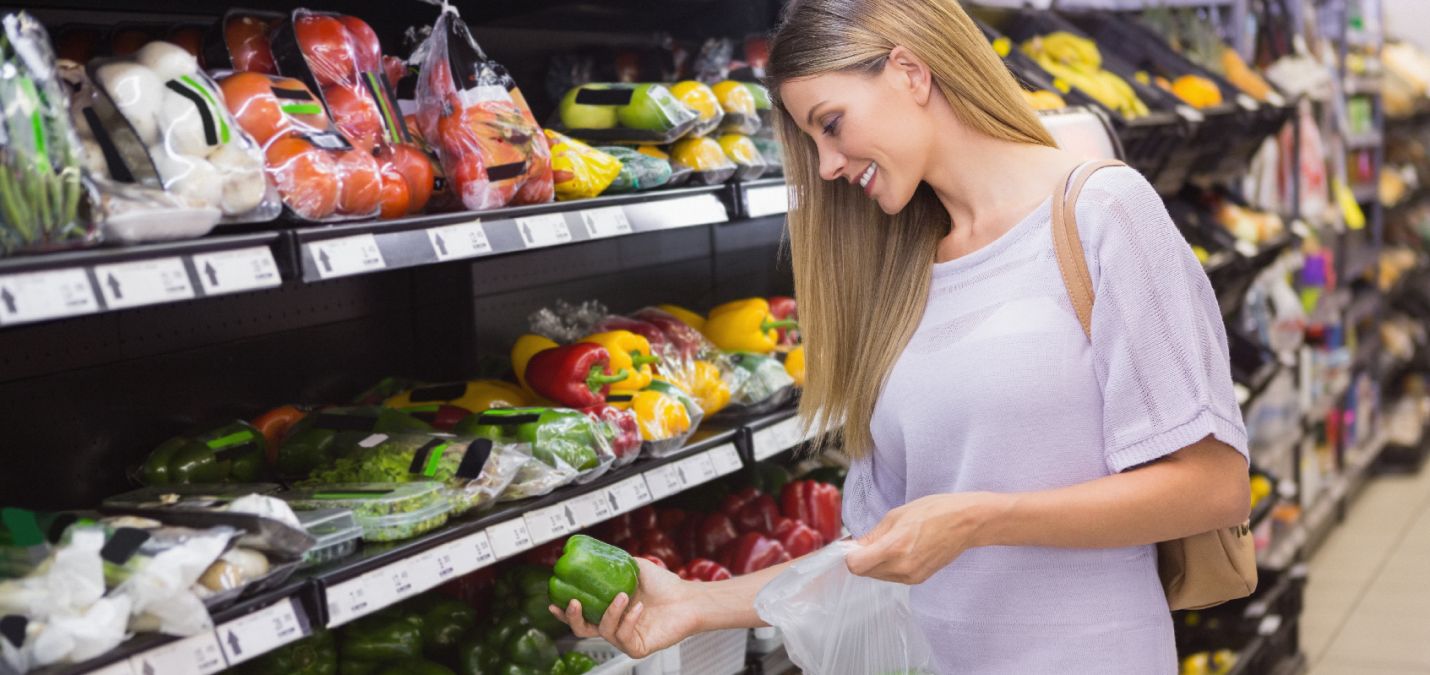

How can we reduce packaging waste when grocery shopping?
We live in a globalised world in which the activities of producers and consumers’ daily purchasing decisions affect the functioning of the entire ecosystem. Every day we can decide how much waste (if any at all) we will generate. What can we do to reduce it to a minimum?
Make sure you have your shopping list and your own bag when shopping.
You may be thinking: what does planning your shopping have to do with generating waste? Well, a lot. Because more products means more packages that will end up in the bin.

It is worth trying to be systematic and each time, before shopping, you should make a list of the items that you need only, as being spontaneous when shopping does not always pay off. Try this method and you will notice that:
- there will be more money left in your wallet,
- you will buy the products you need anyway,
- you will not be distracted while walking around the store,
- you'll make less waste.
Always bring your own bag or two for such well- planned shopping.
Casual and eco-friendly
All fruit and vegetables, unless they previously came in their original packaging, should be purchased loose. This habit is beneficial not just because it generates less waste. Due to this, fresh products have their natural ventilation and do not sweat in bags tied with a knot. As a result, they retain their qualities for longer.

Avoid excess
’The more, the better’ is not always the case. The fact that a product is packed in additional cardboard boxes will not make it more "exclusive" or improve its durability. Minimalism also works in the case of packaging, so choose the one that potentially generates as little pollution as possible.
Example? Tabasco sauce. Does it really need to have an extra little card attached to it that will end up in waste anyway? Pay attention to how the product is packaged. The packaging should be made in such a way that as little material is used as possible.
Another key issue is fast-moving consumer goods, such as rice, cheese, and mineral water. If you can, choose economy packs, i.e. packages containing the most litres and kilograms of the product. Then, they will last longer and less packaging waste is generated.
Loose products to be put in bags or own containers
Hypermarkets are often equipped with stands for self-weighing loose products, such as nuts, dried fruit, pasta and coffee. Certainly, many of us already hear the rustle of disposable bags torn off there, i.e. small tear-off plastic bags. This is a pure waste, considering that usually the lifespan of such packaging is short and is limited to the distance between the supermarket and the home.

It is better to invest in reusable fabric bags onto which you can easily stick barcode stickers. Another option will be your own plastic or glass containers, intended for multiple use. If you are concerned that they weigh too much, ask the cashier for taring the scales, but for this you will always need one more empty container of the same type.
Limit unrecycled packaging
Avoid buying plastic products, as long as there are substitutes in glass or cardboard packaging available. But beware: don't let the apparent environmental friendliness fool you. For example, milk or juice in cartons generate unrecycled waste. Something that seems to be recyclable, in fact is plastic-cardboard-aluminum packaging, and such multi-material packaging is hardly recyclable. The actual recycling is a complex and technologically advanced process, thus very costly, which in the end is not carried out at all.

Choose compostable substitutes
Now that you know which packaging is better to avoid, which one should you choose? Preferably the one subject to environmentally neutral biodegradation processes. What apparently looks like plastic foil doesn't have to be harmful plastic at all. For instance, some vegetables and fruits in Lidl are wrapped in compostable material derived from organic renewable sources. You will recognise such packages by taking a closer look at them. Check their structure by touch, and you will certainly notice the difference. You can also find information about it on the packaging itself.

Also look for products with the "Compostable" logo. The compostability certificate mark should always be labeled with an appropriate number individually assigned to each producer.

Such packages are made at SILBO. After they are used up, you can put them in the brown BIO waste bin. If they get into industrial composters, they will decompose in a relatively short time, turning into valuable organic matter.
Because at SILBO we use not only raw materials, but also adhesives without harmful solvents and we print using water-based inks, the composting process of these packages is 100% environmentally neutral. We encourage you to make aware choices of packaging and check their markings. As you get the hang of it, your shopping will become more conscious and planet-friendly.
Zobacz również:
Most frequently read

About company
Silbo – packaging production experts with 20 years of experience in the industry. We support environmental protection on many levels, for example with creating new, biocompostable standards in the field of packaging production. These are the main values on which the activity of SILBO is based: focusing on innovation, ecology and quality issues.


Received certificates















